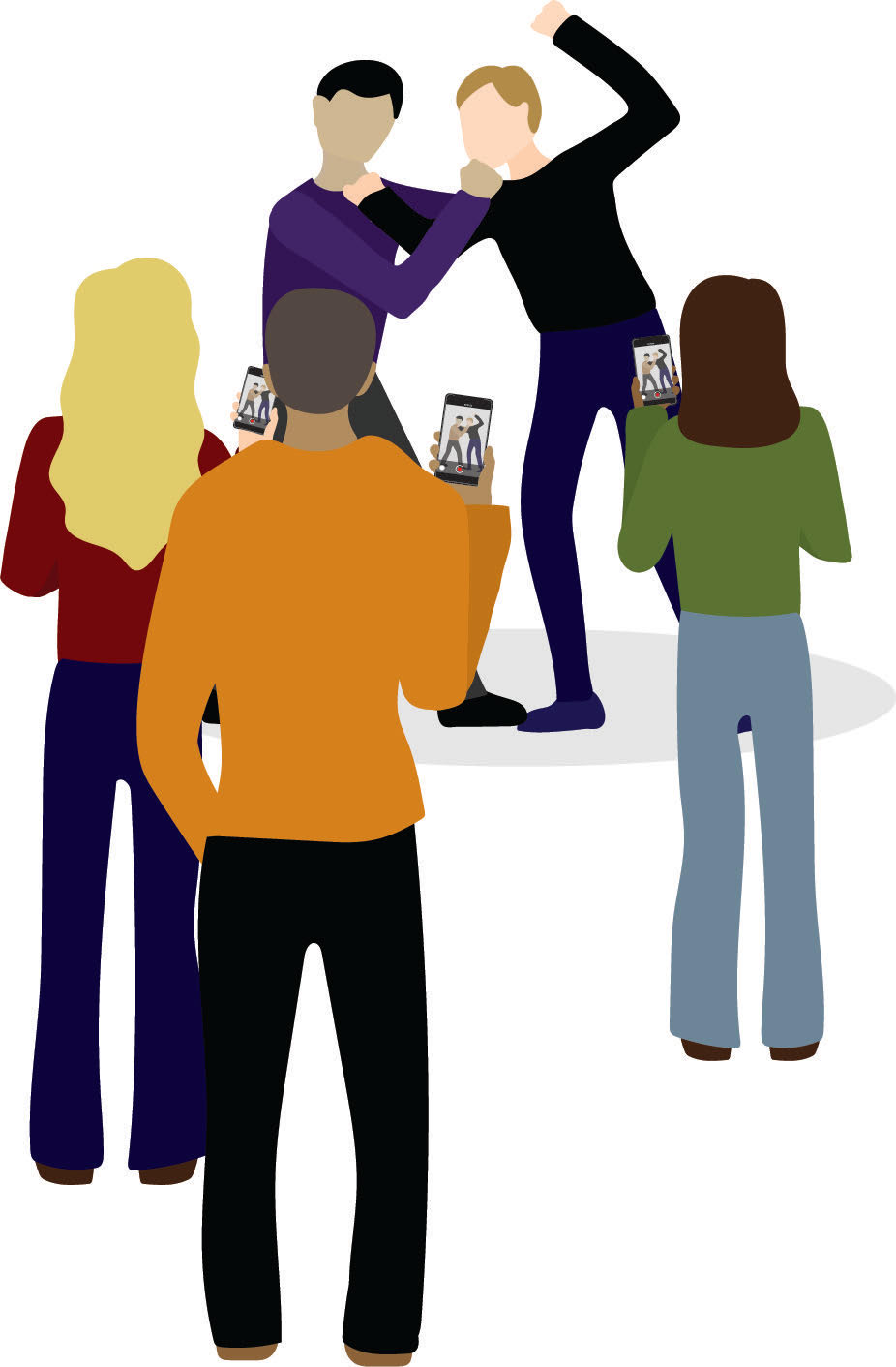Fight on Campus Spotlights Bystanders’ Passivity

According to various Peninsula security staff members, there have been a number of reported incidents involving recent student fights on campus. One of these altercations occurred in one of Peninsula’s restrooms on Feb. 20, where an argument between two students turned physical. While the students fought, their peers recorded videos of the confrontation and proceeded to post them online — yet, the onlookers failed to intervene.
As alarming as the bystanders’ negligence in intervening is, their behavior is the result of psychological phenomenons. According to the Learning Network, in fights, the probability of teenage onlookers taking the initiative to intercede a conflict dramatically decreases. This is due to a social psychological claim known as the bystander effect, which Psychology Today describes as the dramatic decrease in an individual’s willingness to help a victim when other people are present. In other words, the greater the number of witnesses to an incident, the less likely it is that one of said bystanders will help those involved. Psychologists believe that this phenomenon is related to the theory of diffusion of responsibility, which states that people are less likely to intervene if there are others who seem more likely to take the responsibility of doing so. Thus, onlookers of the bathroom fight could have been socially anxious about making a moral decision if it could lead to being ostracized by their peers. Furthermore, if the responsibility is shared through a number of people, no individual could be singularly pointed out for their actions and everyone would be to blame. As a result, observers may either do nothing and watch or even further antagonize the situation by recording, chanting and yelling.
The impact of these spectators could lead to serious injuries or even death. Thus, people in the surrounding environment are acting foolishly if participants’ lives are at stake and they do not take action. The lack of intervention by student bystanders during physical altercations at Peninsula was ill-considered and put the fight’s participants at even greater risk; to protect the lives of other students, students on campus must be active, rather than passive, in these situations.
“It is truly disgusting that people have the audacity to just stand and watch,” Advanced Placement Psychology teacher John Wheeler said. “It is important to understand that these individuals in the fight are humans, not just entertainment or a stepping stone to becoming more socially adept.”
The harm that can result due to recording a violent event but staying silent is often grossly underestimated or misunderstood by bystanders as well. According to stopbullying.gov, bystanders could choose to record videos or take pictures of fights to make themselves feel like they are spreading awareness; despite thinking that they are making a difference, their actions could have drastic consequences. Additionally, some bystanders could also record for popularity or their own enjoyment. If they have footage of the video, the public eye on social media platforms will see this and many will share, comment, like or repost. During the bathroom fight, clips of the fight were spread across multiple social media platforms like Snapchat, where individuals were able to see, save and share the footage. Traumatic events during this fight could have been prevented if a spectator simply stopped recording and worked to end the exchange. These witnesses need to understand the weight of their reactions to encounters such as this. Not only could these videos personally affect those in them, but they have the power to ruin the reputation of the participants and possibly damage their future if found.
“It is extremely wrong that the bystanders who watched the bathroom fight used their phones as a scapegoat to feel as if they are less inclined to get involved in the situation,” sophomore Claire Robinson said. “Not only is hiding behind a phone extremely inappropriate but also immoral. Social media can be used in a positive way to stick up for what we believe in but should not be used to hinder others.”
In an emergency situation, students may not be the ones who need to take direct action, but they can still ensure that the incident is resolved safely. If the onlooker feels as if the situation should not be handled by themself and someone else should intervene, the onlooker must take the initiative to make that happen. Yet neither of these steps were taken by the bystanders at the bathroom fight. The witnesses present at this incident should have reported the situation to the nearest staff member instead of simply recording the situation. The act of stepping in and being active such as reporting to an adult is not only beneficial to the bystander, but to making Peninsula’s campus a much safer and secure environment.
“If [an individual] is apparent at the scene and [a staff member] notices them, [they] may be called in for a conversation,” assistant principal Michael Wanmer said. “Sometimes that conversation may have to do with [the individual] antagonizing the situation, which can result in some serious consequences.”

